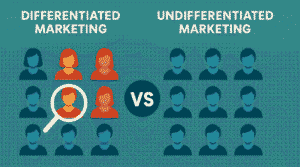Staying ahead of the competition requires embracing cutting-edge technology. One such innovation making waves in the software industry is “headless software.” This transformative approach is reshaping how applications and systems are designed and deployed, offering unparalleled flexibility, scalability, and efficiency. Unlike traditional software architectures, where the user interface (UI) and backend functionalities are tightly integrated, the headless platform decouples these components.
As a result, organizations can rapidly deploy and manage various user interfaces, streamline development processes, and deliver customized experiences across different platforms. In this blog, we’ll delve into what headless software means, explore how it works, and uncover why this approach is a game changer for modern businesses striving for agility and innovation.
Definition of Headless Software
At its core, headless software is an architectural approach that decouples the front end (the user interface) from the back end (the server and database) of an application or system. Traditionally, software systems have been built as monolithic entities, where the front-end and back-end are tightly integrated. However, headless technology takes a different approach by allowing these components to function independently.
In a headless system, the front end is responsible for presenting the user interface and interacting with users, while the back-end handles data processing, storage, and business logic. This separation of concerns offers several advantages, such as enhanced flexibility, scalability, and the ability to adapt to changing technology trends.
This architectural approach creates a clear boundary between two crucial parts of any application:
- The “body” (backend): Handles all the core business logic, data processing, and storage
- The “head” (frontend): Manages how users interact with the application
The communication between these separated components happens through well-defined APIs (Application Programming Interfaces), creating a flexible and powerful system that can adapt to changing needs.
Core Characteristics of Headless Software
Architectural Freedom Through Decoupling
The fundamental characteristic of headless software is its decoupled architecture. This separation isn’t just a technical detail – it’s a transformative approach that brings several significant advantages to modern application development.
When a backend system operates independently of its presentation layer, it becomes a versatile powerhouse that can serve multiple frontend applications simultaneously. Think of it as a skilled chef in a kitchen who can prepare meals for multiple dining rooms, each with its own unique ambiance and serving style.
API-First Philosophy
The backbone of headless architecture is its API-driven approach. Modern headless systems typically implement RESTful APIs or GraphQL interfaces, creating a standardized way for different components to communicate. This isn’t just about connecting components – it’s about creating a universal language that any front end can understand and utilize.
Consider these APIs as a sophisticated translation service: they ensure that regardless of whether a request comes from a mobile app, a web browser, or an IoT device, the backend can understand and respond appropriately.
Scalability and Performance Engineering
One of the most compelling aspects of headless architecture is its approach to scalability. Unlike traditional monolithic applications, where scaling often means replicating the entire application, headless systems allow for precise, targeted scaling of individual components.
For instance, during a marketing campaign that drives heavy traffic to your content, you can scale up your frontend servers without touching the backend infrastructure. Similarly, if you’re processing large amounts of data, you can boost your backend resources while maintaining a lean frontend presence.
How Headless Software Works?
At its core, headless software operates through a set of APIs (Application Programming Interfaces) that act as the communication channel between the frontend and the backend of a system. In a traditional monolithic architecture, the frontend (what the user sees) and the backend (where data and logic reside) are tightly integrated. In contrast, headless software decouples these two components, allowing them to operate independently while still interacting seamlessly via APIs.
This separation of concerns creates a more flexible and scalable system, where the backend provides data and services via APIs, and the frontend requests and displays this data to users in a way that’s optimized for each device or platform. Think of the backend as the engine of a car and the frontend as the dashboard and controls—the two work together, but they don’t need to be physically attached to function.
The Role of APIs in Headless Software
APIs are the backbone of headless software. They essentially define how the frontend (the “head”) and backend communicate with each other. These APIs handle the data transfer, requests, and responses between the two, ensuring everything stays synchronized. When a user interacts with the frontend, such as clicking on a button or submitting a form, the frontend sends a request to the backend via the API. The backend processes the request, retrieves the necessary data, and sends it back to the frontend in real-time. The frontend then updates the user interface accordingly, providing a dynamic, responsive experience.
By using RESTful APIs or GraphQL (another popular API framework), headless systems allow businesses to serve content across multiple channels—such as web applications, mobile apps, IoT devices, digital kiosks, and more—without having to duplicate backend logic for each platform. The backend remains the same, but the frontend can be customized to fit the unique needs of each touchpoint.
Flexibility in Technology Stacks
One of the standout benefits of headless software is its flexibility when it comes to choosing the right technology stack for both the frontend and backend. In a traditional monolithic system, the frontend and backend are often built using the same technology stack, making it difficult to change or upgrade one without affecting the other. However, with headless architecture, businesses can select the best tools for each part of the system independently.
For example:
- Frontend: You could choose a modern, dynamic JavaScript framework like React or Angular to build a rich, interactive user interface. These frameworks are highly versatile, and their component-based design allows for the efficient development of reusable UI elements. They also have strong ecosystems of libraries and plugins, making it easier to build complex interfaces quickly.
- Backend: For the backend, you might opt for a robust and scalable platform like Node.js, which can handle large volumes of real-time data requests efficiently, or Java, which is known for its stability and scalability, especially in large enterprise applications. The backend can be structured to serve data in various formats (such as JSON or XML), and it can integrate with databases, third-party APIs, or even AI-driven services.
This decoupled approach allows businesses to choose the right tools for the job, rather than being restricted to a monolithic system that forces them into a one-size-fits-all solution. Over time, as technology evolves and new frameworks and tools emerge, businesses can swap out their frontend or backend components with minimal disruption, making it easier to stay ahead of the curve.
Customization Across Multiple Platforms
Another powerful advantage of headless software is its ability to deliver a consistent user experience across multiple platforms. Since the backend is decoupled from the front-end, businesses can serve content and functionality to a wide range of devices, from traditional websites and mobile apps to more specialized platforms like voice interfaces, smart devices, and even virtual reality (VR) or augmented reality (AR) applications.
For instance, if your business wants to expand its presence across different touchpoints, you can use the same backend to power:
- A web app with dynamic, rich content
- A mobile app for a seamless, on-the-go user experience
- A voice assistant (like Amazon Alexa or Google Assistant) to answer customer queries
- IoT devices (smart refrigerators, fitness trackers, etc.) to gather or deliver data
- Digital kiosks in stores or public spaces, providing real-time information
Each of these platforms can have its own unique frontend—designed specifically for the device it runs on—while sharing the same backend logic. The API will pull the appropriate data and present it in a format optimized for that platform. For example, a mobile app may display images and text in a compact format, while a voice assistant may deliver information in an auditory form.
This ability to adapt and customize the user interface for each platform’s specific requirements without changing the underlying backend makes headless architecture an ideal choice for businesses looking to expand their digital presence and stay competitive.
Scalability and Speed
Headless software also shines when it comes to scalability and performance. Since the frontend and backend are independent, they can be scaled separately. If your user base grows, you can upgrade or enhance the frontend or backend without disrupting the other. For example, you might need to scale your backend to handle more requests during peak shopping seasons, but you don’t need to adjust the frontend at all. Similarly, if you want to roll out a new feature or update on the frontend, the backend remains untouched.
Furthermore, the decoupled nature of headless architecture improves performance. Since APIs handle data requests directly, it’s easier to implement caching, load balancing, and other optimization techniques. The frontend can retrieve data from the backend without waiting for a complete page reload, ensuring faster load times and a smoother experience for users. This can be especially important for businesses that rely on high traffic volumes or real-time interactions.
Seamless Integration with Third-Party Systems
Another key aspect of headless software is its ability to integrate seamlessly with third-party systems and services. APIs make it easy to connect your backend to external tools, whether for customer relationship management (CRM), marketing automation, analytics, or e-commerce functionality. For example, if you’re using a third-party payment processor, the backend can send and receive payment data through an API without affecting the frontend interface. This modularity allows businesses to integrate with a variety of services while maintaining a flexible architecture.
Advantages Headless Application Software
Boosted Development Efficiency
One of the key benefits of adopting headless architecture is how it streamlines the software development process. Separating the frontend from the back end, it creates natural boundaries that help your teams specialize in what they do best.
Frontend developers can focus on building the user interface with their favorite tools and frameworks, without needing to dive deep into the backend. Meanwhile, backend developers can zero in on business logic and data management, without worrying about how the frontend is structured.
This split leads to:
- Faster development cycles: Teams can work in parallel, speeding things up.
- Less debugging: When issues do arise, it’s easier to isolate the cause.
- Better use of resources: Teams can focus on their areas of expertise, using their time more effectively.
- Improved collaboration: With clear boundaries and specialized roles, teams work together more smoothly.
Adaptability
Headless software offers unparalleled flexibility and adaptability, making it a standout choice for modern businesses. By decoupling the front-end and back-end components, headless systems allow organizations to make changes to one layer without impacting the other. For example, an e-commerce site can refresh its look and feel or add new user-facing functionalities without altering the underlying data management and processing systems.
Conversely, backend upgrades, such as integrating new data sources or improving database performance, can be accomplished without disrupting the end-user experience. This separation not only facilitates easier maintenance and updates but also supports innovation by enabling teams to experiment and deploy changes more rapidly.
Flexible and Future-Proof
Headless application helps future-proof businesses by allowing them to adapt to new technologies and trends with minimal disruption. As new devices and interfaces emerge, businesses can quickly integrate these into their existing systems without overhauling the entire infrastructure. This forward-compatible approach ensures that organizations remain agile and can easily incorporate innovations, keeping them competitive in a rapidly evolving digital landscape.
By leveraging the flexibility, scalability, and adaptability of headless software, businesses can achieve greater operational efficiency, deliver superior user experiences, and stay ahead of technological advancements. Headless architecture makes this easier by allowing businesses to:
- Use new frontend technologies without reworking the backend: You’re not tied down by the backend when experimenting with new tools.
- Experiment with new platforms and channels: Whether it’s a new mobile app or voice assistant, you can test new ideas without a complete overhaul.
- Integrate emerging technologies: Headless makes it easier to plug in new tech as it becomes available.
- Stay competitive: With the ability to adapt quickly, businesses can keep their edge in a fast-paced market.
Scalability
Headless systems provide the ability to scale each component independently, ensuring that applications can efficiently handle increasing loads without compromising performance. For instance, an e-commerce business might experience a surge in traffic during holiday seasons or promotional events. With a headless architecture, businesses can scale their front-end and back-end systems separately to accommodate the increased demand.
This means adding more server resources to the back-end or optimizing front-end performance can be done without affecting the other, allowing for smoother operation during peak times. This scalability is particularly valuable for content-heavy websites and platforms with high user engagement, as it ensures a consistent and responsive user experience even under varying conditions.
Perfect for Omnichannel Experiences
Headless ecommerce also excels at delivering enhanced omnichannel experiences. By separating content management from the presentation layer, businesses can deploy a single backend to power multiple front-end channels, such as websites, mobile apps, and IoT devices. This capability allows for a unified content strategy across different touchpoints, ensuring that users receive consistent and relevant information regardless of the device they use.
This approach not only improves user engagement but also simplifies content management, as updates made in the backend are automatically reflected across all channels. Instead of having separate systems for each channel, a single backend can power everything, from:
- Web applications
- Mobile apps
- Voice interfaces
- IoT devices
- Digital kiosks
- New platforms that are on the horizon
This not only keeps your brand consistent but also ensures that the user experience is tailored for each platform’s unique needs.
Use Cases for Headless Software
Ecommerce Platforms
Headless software has become a game changer for what ecommerce means for retailers, which often grapple with managing complex product catalogs, dynamic pricing models, and personalized shopping experiences. By decoupling the front end from the back-end, headless technology allows e-commerce platforms to create highly customizable and responsive user interfaces that can easily adapt to changing consumer demands and trends. This flexibility enables businesses to deliver tailored shopping experiences across various devices and channels, from websites to mobile apps.
Additionally, headless software facilitates seamless integration with various payment gateways, shipping providers, and third-party services, ensuring a cohesive and efficient online shopping experience. This adaptability not only improves the user experience but also supports the rapid implementation of new features and updates, helping businesses stay competitive in the fast-paced e-commerce landscape.
Content Management Systems (CMS)
Headless software is also revolutionizing content management systems (CMS), particularly for content-driven websites like news portals, blogs, and media sites. Traditional CMS platforms often tightly integrate content creation with the website’s structure and design, which can limit flexibility and slow down the publishing process. Headless CMS solutions address this by separating content management from presentation.
This separation allows editors to update and manage content independently of the website’s front end, making it easier to publish articles, videos, and multimedia content without impacting the site’s layout or user interface. As a result, content creators can work more efficiently, and websites can deliver fresh, dynamic content more rapidly, enhancing overall engagement and user experience.
Things to Keep in Mind When Implementing Headless Architecture
While headless architecture offers numerous advantages, there are some important considerations when putting it into practice.
Start with a Strategy
Before diving in, take some time to think about your business goals and how headless fits into them. Some things to think about include:
- Your current and future channel needs: What platforms will you need to support now and down the road?
- Your development team’s skills: Are they ready to handle the shift to a decoupled architecture?
- How it will integrate with existing systems: Headless might not be a total overhaul, but you’ll need to ensure it can work with your current tech.
- Scalability and performance: Will your new architecture handle future growth?
Think Through the Tech
For a smooth implementation, pay attention to the technical details, including:
- API design and documentation: Since everything’s driven by APIs, solid design and clear documentation are a must.
- Security and authentication: Make sure your security protocols can handle the decoupling.
- Caching strategies: Headless can be demanding on performance, so caching plays a big role in optimization.
- Data modeling: Structure your data in a way that supports flexibility across channels.
- Performance optimization: Ensure the system can scale with demand.
Organize Your Teams
With headless, you’ll need to rethink your development team structure to get the most out of the architecture. Some tips for success:
- Create specialized frontend and backend teams: Let each team focus on their area of expertise.
- Establish clear communication: With different teams handling different parts of the stack, strong communication is essential.
- Define ownership boundaries: Make sure everyone knows who’s responsible for what.
- Set up the right collaboration tools: Make it easy for teams to work together, especially when they’re tackling different parts of the system.
Headless Software in Business Action
Let’s take a closer look at a real-world example of headless software in action. Imagine an e-commerce platform that has embraced the headless approach. On the front end, customers interact with a visually appealing and responsive user interface built using modern web technologies. This front-end communicates seamlessly with the back-end, which manages inventory, orders, and customer data.
During the Christmas holiday sale, the e-commerce platform for Amazon experiences a surge in traffic. Thanks to its headless architecture, Amazon can quickly scale up its server infrastructure to handle the increased load while keeping the user experience smooth. Simultaneously, the marketing team can make real-time changes to the front end to promote special offers and discounts, such as limited-time deals and exclusive holiday promotions, without any disruption to the shopping experience.
This seamless adaptability allows Amazon to efficiently manage high volumes of traffic and deliver a dynamic and engaging shopping experience to customers, all while ensuring that backend performance remains robust and reliable.
Future Trends and Innovations
As technology progresses, headless software is set to evolve significantly, bringing exciting advancements to the field. We can anticipate enhanced tools and frameworks designed for building headless applications, which will simplify and accelerate development processes. Improved API management solutions are expected to offer greater efficiency, making it easier for businesses to integrate and manage their systems.
Additionally, increased support for serverless computing will contribute to the scalability and flexibility of headless systems, allowing for more dynamic and cost-effective deployments. These innovations will continue to drive the agility and performance of headless software, positioning it as a crucial component in the tech landscape. As the digital landscape continues to evolve, headless architecture is only going to become more important. Some trends that suggest this include:
- Composable commerce platforms: Flexible, modular systems that can grow and change as your business does.
- AI-driven content delivery: Personalized content delivered at scale, without backend constraints.
- Progressive Web Applications (PWAs): Apps that work seamlessly across devices, often powered by headless backends.
- Edge computing integration: Taking performance to the next level by processing data closer to users.
With these innovations on the horizon, headless architecture is primed to be a key player in shaping the future of digital experiences.
Conclusion
In conclusion, headless represents a transformative shift in the world of software architecture. It empowers businesses to build flexible, scalable, and adaptable applications and systems that can thrive in today’s fast-paced digital landscape. Whether you’re running an e-commerce platform, a content-heavy website, or any other digital venture, understanding and harnessing the power of headless software can be a game changer for your business.
As technology continues to advance, embracing headless applications and systems is not just a trend but a strategic imperative for businesses looking to stay competitive and agile in an ever-evolving market.





